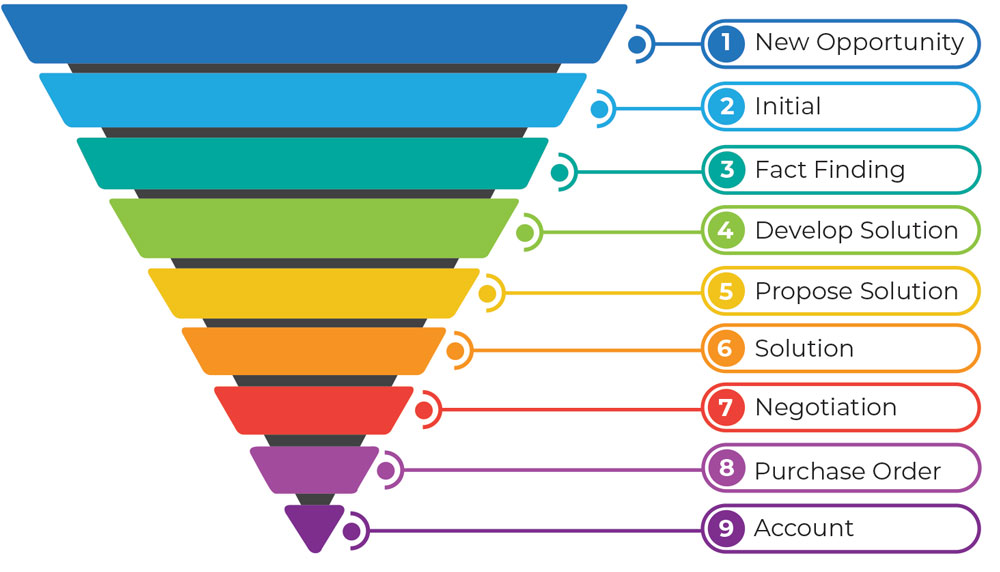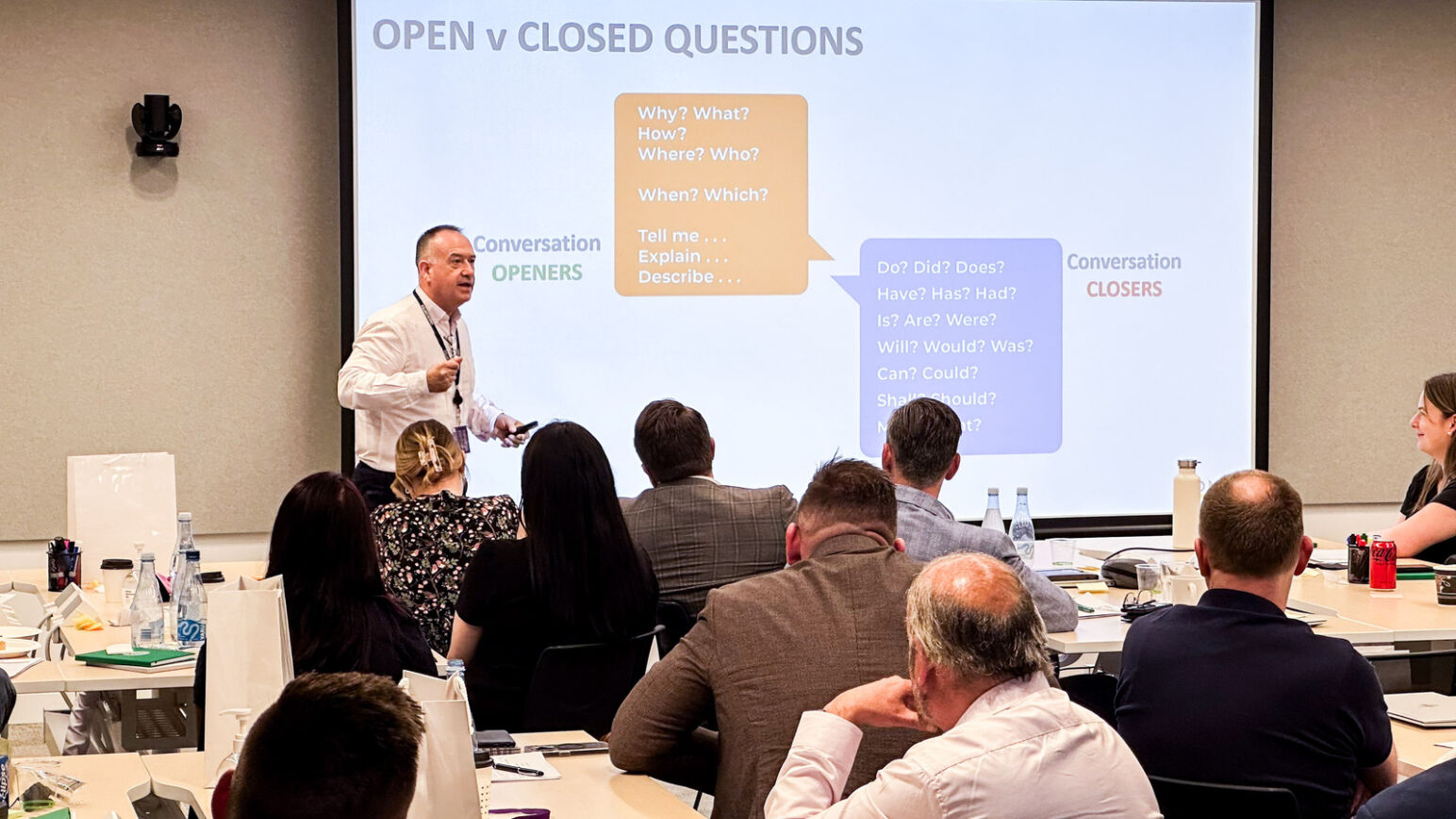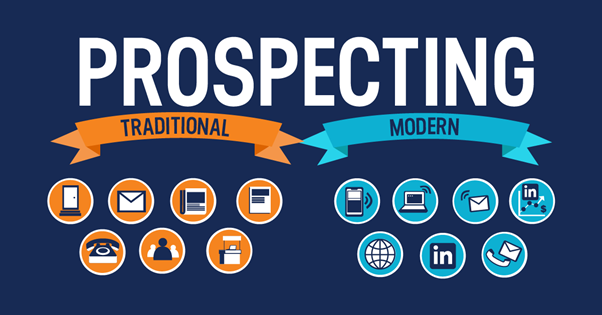I have walked away from many deals in the past and I will continue to do so if it is not the right fit, or it feels wrong. While writing this I’m taken back to the very first time I walked away from a sale, actually, I actively discouraged the person to buy.
I moved back to Ireland from Guernsey in the Channel Islands in the 1990’s and it was the height of a recession. The only thing I was qualified to do was in hospitality and I could not find any employment. So, I took a job in sales, something I thought I would never do. However, this was not any sale job, this was selling life insurance, door to door, commission only. I thought, “welcome to sales”!!!
Back then we went into the office on a Monday, took out the yellow pages and hit the phones to make appointments, 100+ calls a day to get three, maybe four appointments. On one of these appointments my BIG boss came out with me.
So, we met at Michael Mc—– house (a modest terrace home south of Dublin) and the first thing I noticed was that the outside was very unkempt. When Michael greeted us, he was so lovely, and we were given tea and biscuits. On the icebreaking part of the meeting, it transpired that he knew my father and that was the reason he agreed to meet.
The sales pitch began, and we were on fire… I presented the pack brilliantly and it was going so well, and he was “putting pen to paper”, when his son came down the stairs and asked for (I think new school shoes, I can’t remember) and the response from Michael was something along the lines of “make do as we can’t afford to buy new shoes at the moment”.
At this point I took the contract from him and said something along the lines of “Michael, on second thoughts I am not sure that this is the right policy, based on what you told us I will need to go back and do a little more research.” and we left.
I knew that he was over committing and because of the relationship he once had with my father he felt obliged to continue.
When we were outside my boss “ripped into me” with nearly every expletive you can imagine. He said, “You will never make it in sales as you clearly don’t have what it takes, the killer instinct, you have just ripped up £2,000.” At this I told him to shove it and I went back to London.

As a salesperson, do you know when it’s time to walk away from a sale?
Walking away can be a tough decision, particularly when you’ve invested your time and energy into building a relationship with a prospect. Having said that, there are some situations where it can be the right choice.
Here are 6 common reasons to walk away from a sale as a salesperson:
1. Ethical Concerns
Ethics in sales refers to behaviours that ensure that every customer is treated with respect, fairness, honesty and integrity.
Some common examples of ethical issues in sales include:
- Selling a product rather than a solution
- Telling only part of the truth
- Lacking accountability
If the product or service you’re selling doesn’t meet the needs of the customer or if it’s not the right fit for them, it’s best to walk away rather than push them to purchase something they don’t need.
2. Unrealistic Demands
If the customer is making demands that your company can’t fulfil or that would compromise your integrity, it’s better to walk away than to promise something you can’t deliver.
Some of the things salespeople should avoid when a customer has unrealistic expectations include: Arguing with the customer, losing your patience, not actively listening, not looking for other options for the customer.
3. Lack of Respect
Occasionally as a salesperson you may encounter a customer who is disrespectful, demanding or who comes across as rude. The old saying “The customer is always right” is not always the case.
If a customer or prospect is disrespectful or abusive toward you, it’s not worth sacrificing your dignity or well-being for a sale, and it’s time to walk away.

4. Price Objections
If the customer is solely focused on price and unwilling to see the value in your product or service, it may not be worth your time to continue the sale.
Objections in sales are inevitable, and a tailored Sales Training Program can assist sales teams with effective objection handling techniques that they can utilise when customers raise objections. However, if your customer is only objecting on price, and you have done your best to overcome their objections, it could be in your best interest to walk away from the sale.
5. Unreasonable Expectations
As a salesperson, on occasion you may encounter customers who have unrealistic expectations. For example, they might push for an unrealistic timeline that would require you to cut corners or compromise quality. When this happens, it’s better to walk away than to risk damaging your reputation.
If there’s a significant gap between what the customer expects and what you can realistically deliver, it’s best to be upfront about it and potentially walk away rather than disappoint them later.
6. The Customer cannot see the Value of your Product or Service
It’s the salesperson’s responsibility to show their prospect the value that their product or service will have. If a prospect can’t clearly see value, they will not buy.
When you have made attempts to show your prospect the features, benefits and value of your product or service, and they still aren’t convinced, it could be time to walk away.
A good tip to ensure you are demonstrating value is to reflect on the conversations you have with prospects. This way you can learn from them and improve your value proposition.
Walking away from any sale is never a good feeling. But remember, walking away doesn’t necessarily mean entirely giving up on your customer. It could simply mean postponing the sale until a better fit or solution is found, or referring them to a colleague or competitor who may be better able to meet their needs.

Contact KONA today to find out how we can help to strengthen your sales team with a tailored Sales Training Program.
Call 1300 611 288 or email info@kona.com.au











































































































